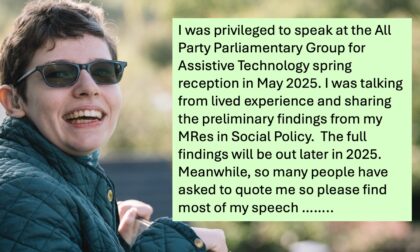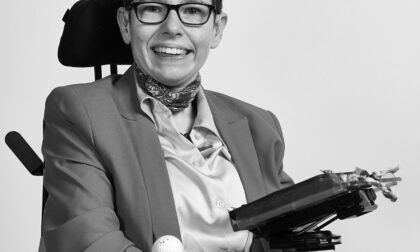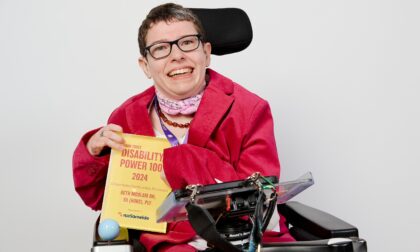 Have you ever opened your mouth to speak only to find you can’t get a word into the conversation? Or managed to say something, just at the point everyone goes quiet, and the whole room turns to look at you because it seemed you shouted? Or managed to blurt something out for it to be incomprehensible to others? It reminds me of the scene in Harry Potter and the Goblet of Fire when Harry asks out Cho Chang and she doesn’t understand a word he’s saying. Maybe he should have tried using AAC!
Have you ever opened your mouth to speak only to find you can’t get a word into the conversation? Or managed to say something, just at the point everyone goes quiet, and the whole room turns to look at you because it seemed you shouted? Or managed to blurt something out for it to be incomprehensible to others? It reminds me of the scene in Harry Potter and the Goblet of Fire when Harry asks out Cho Chang and she doesn’t understand a word he’s saying. Maybe he should have tried using AAC!
Blurting, shouting, and being overheard
I am used to all of these things happening, on a nearly daily basis. I have dysarthric speech. That means the muscles in my mouth, tongue, and throat don’t work properly. It’s all to do with my cerebral palsy. So, when I do choose to use my own voice it can be variable in output. My power and clarity can vary depending on my emotion, how I’m seated or if I’m tired. In the same sentence I can be as quiet as a mouse and then shout for someone across the room to hear. This variability is outside of my control. Then, I am only intelligible in context to those who know me well.
 This means I often choose to use my electronic communication aid. AAC means being understood. But as a communication method this has challenges too. Unless I turn the sound down everyone in the room can hear what I’m saying. There can be no whispered conversations. Because it is not spontaneous, or I am unintelligible verbally, then I’ve come to expect I can’t always say what I want and when.
This means I often choose to use my electronic communication aid. AAC means being understood. But as a communication method this has challenges too. Unless I turn the sound down everyone in the room can hear what I’m saying. There can be no whispered conversations. Because it is not spontaneous, or I am unintelligible verbally, then I’ve come to expect I can’t always say what I want and when.
Pre-programmed speech versus spontaneity
Stephen Hawking, the man with the great mind, and Lee Ridley, the comedian, have been amazing. Together they have raised awareness of alternative communication methods. But unfortunately, they have not helped the wider public understand using AAC is slow. There is a big difference between pre-programmed speech and spontaneous speech using a communication device. I know I’ve said it before but normal speech is between 150 and 240 words per minute. As an AAC user when I pre-programme a speech I deliver it between 80 and 100 words per minute. Spontaneously I can only do around 20 words in that same time, making my communication partner wait!
The reaction of a communication partner matters
Communication is not just about what we want to say, but it is all about how our communication partner reacts. What they say, or don’t say, how they behave and what action they take. I’ve discovered when I want action to be taken the best approach is to use my communication aid. AAC means being understood the first time around even if it is slow.
Whilst my personal assistants understand much of my speech I’ve discovered the benefit of pre-programming what I want to say. This might be about my plans for the next day, or for a discussion on a particular topic such as giving feedback. It means I get my message across in a controlled, and if necessary, diplomatic manner. Of course, we can still have a discussion but I have framed the content leaving less room for interpretation or misunderstanding. The pre-programming takes away the initial need for spontaneous programming. It also means I have the time to think about what I want to say and how. The downside is I need to set aside planning time. I justify this as we all rehearse things in our heads, so programming is my practice session.
My communication continues to evolve
I’ve said before, my communication is evolving, even day by day. As I learn new leadership skills or develop new ways of working I am adapting to my environment and circumstances. Choosing the right communication method is important to be understood with the least effort. Meanwhile, using AAC means being understood, however, I’m not sure I know the answer is for improving the speed of input to improve the spontaneity of output.
You can read more about my experiences of using an electronic communication device and communication partners here.





If you found this interesting or
helpful please feel free to share.